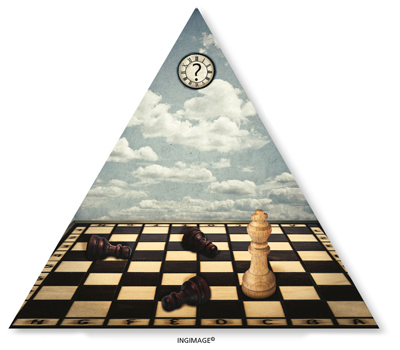CORPORATE ETHOS
CULTURE A MEANS TO AN END
Jayashantha Jayawardhana identifies mantras for success
One of my favourite management aphorisms is that ‘culture eats strategy for breakfast,’ as observed by management thinker Peter Drucker. Culture is important because it’s what holds an organisation together and motivates your people to do the right (rather than easy) thing.

So what really is culture in an organisational context?
It’s the set of values, mindsets and behaviours that creates an organisational environment that is conducive to success.
Seasoned executives place culture and strategy on an equal footing. This is because without a strong culture, even the most astute strategy can throw your organisation into mediocrity… or worse.
Paul Meehan, Darrell Rigby and Paul Rogers who co-authored the Harvard Management Update article titled ‘Creating and Sustaining a Winning Culture’ spell out two defining characteristics of such a culture: a unique personality and soul, which are based on shared values and heritage.
Volvo’s emphasis on safety isn’t the same as Enterprise Rent-A-Car’s focus on customer service. They differ sharply from the tech giant Apple’s spirit of innovation. But every employee in these companies has no trouble identifying with their company’s values and priorities because the entire organisation is driven by those shared values.
Cultural norms and behaviours translate the organisation’s unique personality as well as its soul into customer focussed actions, and bottom line results. Companies with winning cultures are always in a better position to execute strategy, and their employees maintain a healthy external focus on customers and competitors instead of spending their energy on internal politics or waging turf wars.
Employees think and act like owners when they take personal responsibility for business performance rather than only their role in it. They also demonstrate a clear bias for action with scant regard for bureaucratic debate.
Admittedly, even companies with well-established winning cultures aren’t entirely devoid of internal politics or turf wars. But a strong culture serves as a buffer against such destructive practices and keeps them from escalating to a disturbing scale.
The authors say that “instilling a winning culture can be a tough challenge as it requires changing how people think about the company and altering habitual behaviour. But any kind of marketplace threat can present an opportunity to break down old unproductive habits and instil the elements of a high-performance culture.”
Through their research and observations, they’ve discovered the companies that create and sustain winning cultures tend to follow the five steps described below.
They perform a culture audit and set new expectations. Conducting an organisation-wide survey or having one-on-one conversations with a broad sample of employees representing the whole organisation can help find out what’s unique about the company’s heritage, strong in its current culture or missing altogether. The audit must also examine a culture’s weaknesses in order to identify the shortfalls that keep the company from achieving its strategic goals.
Aligning the management team is one of the most important and potentially toughest steps in the process of creating a winning culture. It starts with a candid assessment of each member. Do they believe in the new culture and are they proud to be change agents? Are they adaptable enough to unlearn unproductive old habits and learn productive new ones? Often, a few hearts may break as this could result in the company having to let go of some workers in order to bring in others.
Culture is a means to an end; not an end in itself. The goal is the strategic agenda of your business – to build a culture that shores up that agenda, sets targets for the business and articulates how they cascade down to individual managers; and then holds them accountable on deliverables, sets performance targets and puts their noses to the grindstone.
Though culture may appear to be a soft concept, it’s shaped by some hard disciplines including organisational structure, decision rights, talent management systems, measures and incentives.
For any significant cultural turnaround to occur, these elements must be set in a new direction. For instance, you have to realise that too many layers of management that filter information will weaken a culture that prides itself on speed. Clarifying accountability for key jobs is crucial as is setting performance metrics that reward desired behaviour.
It also pays to remember that cultural change is more a journey than a destination. To ensure that your organisation is on the right track, you also need to stay attuned to your customers’ perceptions and suggestions. Communicate consistently to win people over and maintain the momentum.






Leave a comment